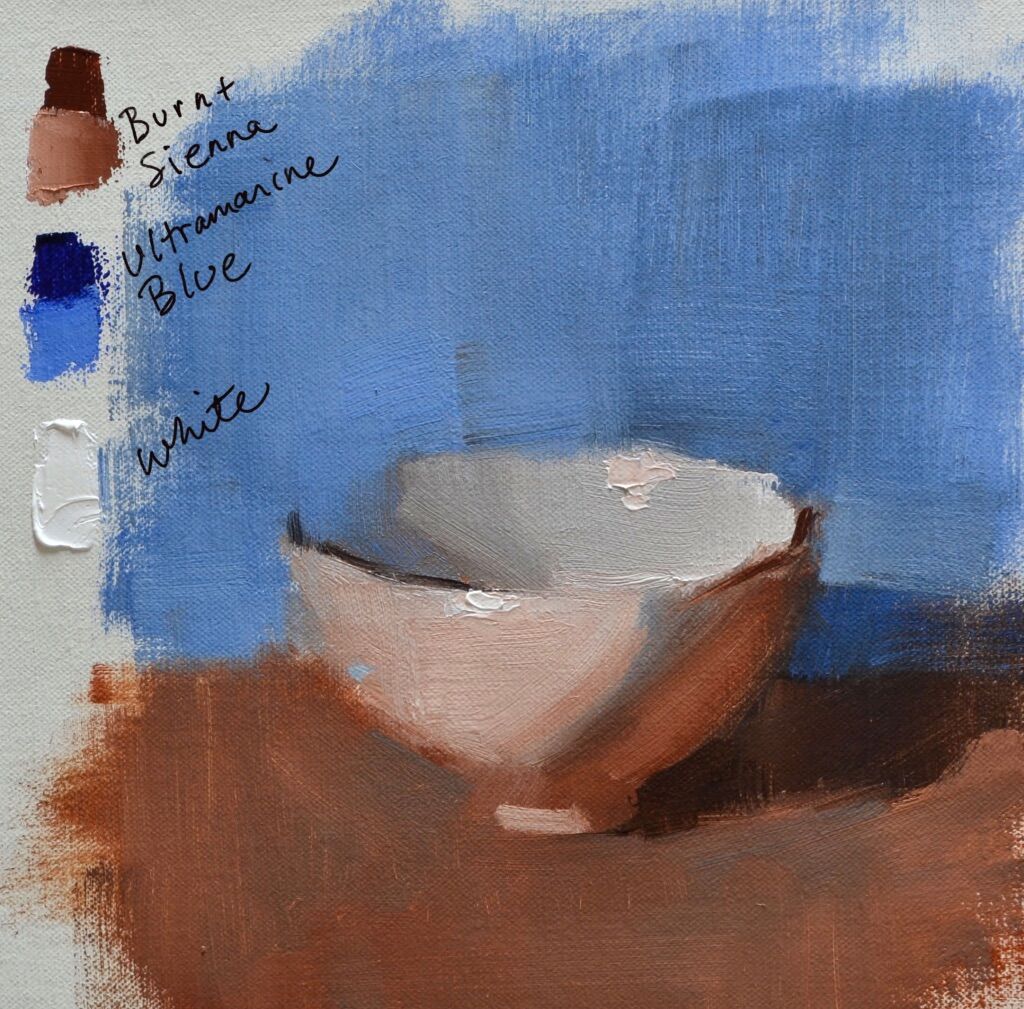The site Artsy.net has a post about this, which I've posted excerpts from below.
NOTICE that the 6-color Primary Palette is the one I started you out with!
The Limited Color Palettes Artists Can Use to Excel at Painting
Painters today have more pigments to choose from than any other artists in history. They can buy traditional, historical varieties that Rembrandt would recognize, such as siennas and ochres, or 20th-century innovations like phthalocyanines and quinacridones—pigments with an intensity that would have startled even the color-loving Impressionists. Despite this abundance, many artists and art educators endorse the use of a restricted “limited” palette as a way to develop coherent, harmonious, and personal paintings.
Monochromatic palettes
Limited palettes are great learning tools. Students are often taught to paint in monochrome, using only a dark brown or black pigment, plus white. This allows them to focus on accurate shapes, degrees of light and dark—called “values” or “tones”—and paint application, without the additional complexity of color. By mastering these austere palettes, students build a strong foundation for the later introduction of color.

A more contemporary monochromatic approach involves using black and white, plus another color. In this example, phthalocyanine blue is introduced to produce a work of tonal accuracy that transcends the academic flavor of a strict black-and-white exercise.

Palettes with one warm and one cool pigment
To add more versatility to their palettes, painters may choose to select one warm and one cool pigment, plus white. In this example, burnt sienna and ultramarine blue are mixed to create a full tonal range, as well as temperature variations from cool to warm. Color temperature is a useful tool for creating the illusion of depth on the two-dimensional canvas.

Warm colors appear to come forward in a painting, while cool colors are recessive. This effect is visible at the inner and outer parts of the bowl. Both areas are greyed because they contain all three colors of the palette, and they are exactly the same value. Yet mixing a larger amount of burnt sienna into the front of the bowl results in a warm color, while mixing more ultramarine into the inner bowl makes it cool.
Notice how the warmer mixture appears closer to the front of the picture plane, while the cooler color recedes into the middle ground. This effect, added to the use of value changes, can create works that convey both form and space.
Primary palettes
(But) Every three-color primary palette will have some weaknesses in color rendering, and artists who want to be able to achieve pure purples, oranges, and greens will have to add colors to it. One way to address this weakness is by adding a single missing pigment, such as green or orange, or by choosing to use a six-color split primary palette instead.

Charting the greens alone shows the broad range of hues—from warm olive to cool lime—that can be achieved with two yellows and two blues. No single green you purchase can achieve such variety.

A painter’s palette is, ultimately, an expression of how they see the world and the colors that they love. By exploring a variety of limited palettes from earthy to intense, painters can discover the combination of colors that best helps them convey their world view.
Comments
Post a Comment